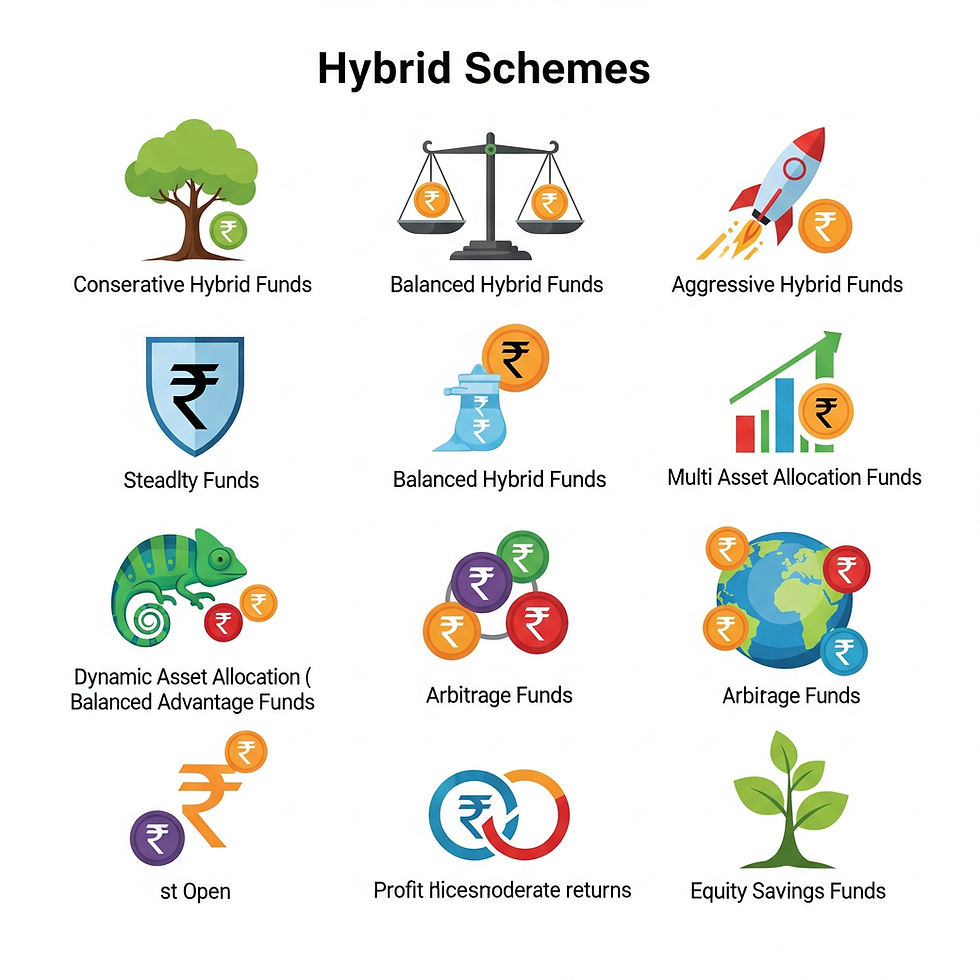Don’t do these, if you are building a portfolio for long-term wealth creation!
- M Manohar Rao
- Jan 31
- 4 min read

Tags: Wealth Management, Investment Lesson, Mutual Funds, Stock market, Budget, Finance, Investing, Personal Finance, Investment
Almost all investors are inclined to make decisions based on their unique set of expectations, market comprehension and investing experience. A positive experience means an improved willingness for higher and longer investments. A negative or displeased experience, on the contrary, means a lower probability of continuity or incremental investments.
In this article, we shall delve into the top don’ts for building a portfolio meant for long-term wealth creation.
Don’t follow the herd
When it comes to investing, the ‘one-size-fits-all’ approach is a myth as each one of us is different in the way we think, our likes and dislikes, etc. Each investor has their own set of expectations, objectives, time horizon, risk profile, etc. Therefore, trying to mimic what a large population is doing —without considering self-goals and objectives—could lead to unexpected or suboptimal returns or outcomes.
What’s more important is to align the investments with the individual’s financial goals and objectives and review them at periodic intervals to make sure they are on the right track.
Don’t have unrealistic expectations
We often get to hear from many investing gurus or legends about how much wealth they have made by investing. While it’s fascinating to hear such stories, it can be misleading to think that one may realise similar gains from investing. This is because everyone’s journey of investing would be different based on their age, time horizon, investment goals, understanding of the markets, risk-taking ability, etc.
While there is no guarantee of past performance, looking at the long-term track record of the fund could help in understanding the fund’s ability to generate returns across market cycles and in setting realistic expectations.
Don’t rely only on near-term past performance
It’s not uncommon for investors to get obsessed about the near-term performance of their portfolio. However, frequent monitoring of the portfolio—particularly when the season is not favorable—could lead to undue churning of the portfolio. This could even impact the long-term performance of the portfolio. Therefore, it is advisable to not get emotionally attached to investment ideas that have either yielded good or bad results in the past. Every fund in the portfolio goes through its own phase of ups and downs, therefore, it’s important to understand the factors responsible for such performance with patience. A phase of underperformance in a fund could be a good opportunity for incremental allocation and vice-versa.
Hence, staying away from making decisions based on near-term performance is a healthy sign of a mature investor and positive for long-term wealth creation opportunities.
Don’t try to time the market
Trying to “time the market” is a strategy that relies upon guessing when the market is at its lowest or highest points. Most often, this strategy requires investors to put in a lot of energy and effort in figuring out the best time to invest. However, it is only in hindsight that one can realise if it was the best time for entry/exit. Although one may get lucky in a few instances, it’s impossible to correctly predict the markets every time as there are numerous factors that influence market movements. Therefore, “time in the market” is more important than “timing the market”.
Moreover, staggered investments in the form of a Systematic Investment Plan (SIP) into the identified funds would aid in tiding over the market ups and downs, making volatility your friend. This approach brings in the much-needed discipline to investments and aims to gain from the power of compounding in the long run.
Don’t react to market noise
Volatility is a feature of the equity market and it’s inevitable. Most investors get anxious the moment they see the market behave irrationally with high volatility. However, the market volatility could be a dear friend of a long-term investor if used wisely. Volatility helps and works well in averaging out the investments; therefore, it can be a boon for an investor investing regularly.
In a connected world, wherein markets tend to react to the news and information across the globe, markets are bound to be highly volatile. Be it a market crash or rally, it’s difficult to predict and time the market. Therefore, in addition to investing in markets on a regular and periodic basis (through SIPs), allocating funds to various asset classes (through Asset Allocation Plans) and periodically rebalancing the asset classes in the desired ratio would help investors ride out the volatility.
When it comes to investing, there is no perfect handbook or manual to follow, as investing needs and objectives could be unique based on individual choice and preference. However, these simple suggestions can help you strategize your investments in the long run.
Lastly, be on guard to ensure that your investments are guided by research and rationale and not by your emotions.
Disclaimer:
The information set out above is included for general information purposes only and is not exhaustive and does not constitute legal or tax advice. All complaints regarding Mutual Fund can be directed towards visit www.scores.gov.in (SEBI SCORES portal). Readers are requested to make informed investment decisions and consult Chaitanya Financial Consultants – 9000628943 / mfd.mmr@gmail.com to determine the financial implications with respect to investing in Mutual Funds.
Mutual Fund investments are subject to market risks, read all scheme related documents carefully.



Comments